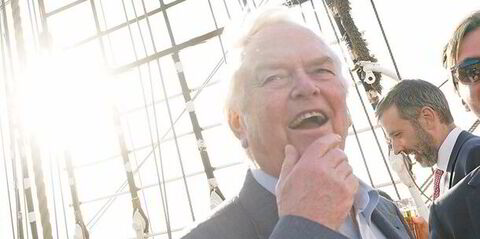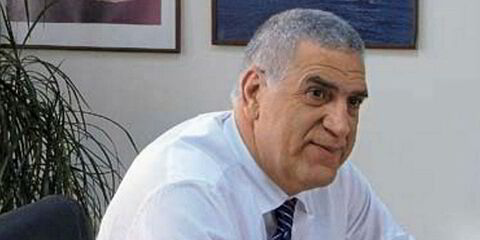The giants of Greek shipping, with huge fleets and huge personalities, are a common topic of discussion. But in Greece, a description that is frequently heard refers to the small companies as the 'backbone' of the country's shipping industry.
Athens-based analyst Petrofin Research calculates that, in 2013, there were 690 Greece-based shipping companies. Out of those, just 35 had 25 or more vessels in their fleets, while 451 companies fell in the one to four-unit categories, accounting for 65% of the whole in terms of actual ship numbers.
But turning the picture around, the one to four-vessel fleets made up 9.27% of the whole in terms of deadweight (dwt) tonnage, while the 25-unit-plus fleets accounted for a whopping 49%.
An evaluation of the smaller fleets shows that the vast majority of owners by no means fit the image of the sidestreet operator of a couple of elderly, patched-up cargoships probably trading the Mediterranean/Black Sea. Despite tight bank financing and constant predictions that small owners or start-up operations will not be able to find money, these smaller companies have somehow managed to finance a substantial amount of new tonnage, often by digging deep into their own pockets.
In another Petrofin presentation related to bank vessel financing at the end of 2013, analyst Ted Petropoulos noted that “we are now seeing the unique phenomenon of cash purchases that had not been seen for the past 40 years”.
Overwhelmingly, Greeks, as they seem to have a knack of doing, have taken advantage of the depressed market and low asset prices to renew their fleets, some impressively so.
Take, for example, Dianik Bros, the shipmanagement arm of the SteelShips group. The company is relatively young, having been established in 2007, and previously had four older ships. In February 2013, its oldest remaining bulker — a 1984-built handymax — went to the breakers following a purchase in mid-2012 of a 1991-built panamax. Since then, Dianik has scooped up three handymax bulkers and a supramax at a total outlay of around $40m and now has a fleet of five, ranging from a 1991-built panamax to its latest acquisition built in 2002.
Bariba Corp, a company that never advertises its activities, stayed out of the market in the boom years but from September 2013, put itself back in the game and has since shelled out $72m to buy a 2013-built kamsarmax and two supramax bulkers, all acquired from Turkey’s Geden Lines.
Not all the players have got their timing spot on. Arion Shipping, for example, took advantage of low asset values to boost its fleet with a couple of ships at the end of last year, buying a 1995-built panamax for $8.5m and one built in 1997 for $9m. But two years earlier, it had put down a stiff $18.9m to acquire a similar 1995-built panamax.
There are dozens of examples of small companies with three or four ships where it looks as if the owners kept their powder dry until market conditions reached the level where they thought it prudent to spend.
What is not so easy to track and record are the cases where overenthusiastic purchases or orders in, say 2007 or 2008, cost owners dearly.
Clemko Ship Management, for example, paid an eye-watering $61m in cash in February 2008 to buy the 47,000-dwt Golden Elpis (built 1997). In September last year, the company sold the ship for $8.5m. Clemko had also extended into newbuildings for the first time in 2010, booking two kamsarmax bulkers at Hyundai Mipo Dockyard (HMD) at a reported cost of $36m each. It later firmed up a pair of options. Two ships, delivered in February and October 2012, are now listed in Clemko’s fleet but the company appears to have sold the other two and is rumoured to have done so at an attractive profit.
Navitas Compania Maritima is another. Having disposed of its last vintage bulker — the 65,000-dwt Ilios (built 1982), which was sent for demolition in December — it has built up a fleet of four vessels, the oldest of which is a post-panamax bulker built in 2009. Two 2012-built supramaxes, one acquired in December for $25m and again coming out of the Geden stable, as well as one newbuilding plus a 2013-built kamsarmax, are now on the company’s roster.
Another company that took advantage of Geden’s selling streak was Trade Fortune, which picked up the 55,398-dwt supramax Fast (ex-East, built 2012) for $25m in December last year. Moving at a steady pace, the company has spent some $95m since 2009 to acquire a fleet of four supramax bulkers built between 2002 and 2012.
Vamvaship Maritime is yet another player that has completely turned around its fleet since 2009, today boasting five supramaxes built post-2004, of which two were newbuildings delivered in 2011 and believed to have been acquired as resales for $33m each. The remaining three units were bought secondhand and pushed Vamvaship’s spending close to $145m.
Overcautiousness prior to the flaming markets of 2008 left some Greek companies with smaller and unrenewed fleets, while others, for various reasons, have run down their operations. Among these are well-known and respectable names.
Gourdomichalis Maritime, for example, a company with a respected name and a 45-year history, now lists just four ships on its website, two of which were acquired last year.
Another heavyweight name, Goulandris Brothers (Hellas), is listed with just four vessels, one of which was delivered this year.
It can hardly be surprising to anyone who has had dealings with the Greek shipping community that such a vast patchwork of companies — some huge, some tiny, many somewhere in between — will, of necessity, also contain a similar variety of opinions on when the right time to buy and sell is, along with how to finance or how to operate.
Only one common strain runs through all the companies and players, and that is the conviction that no matter the hardships or difficult times, shipping is still the place to be.



